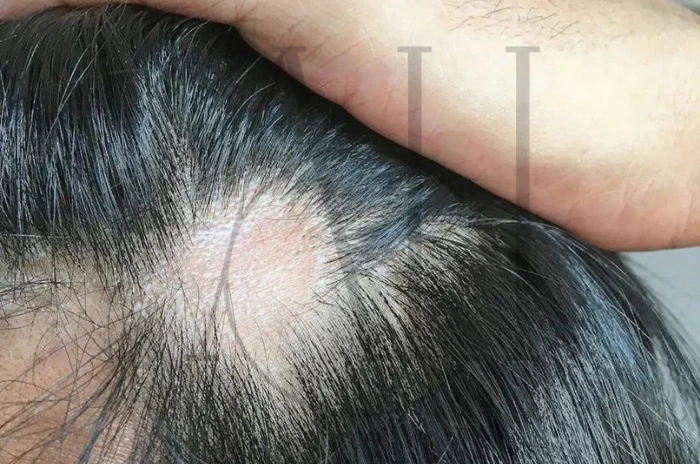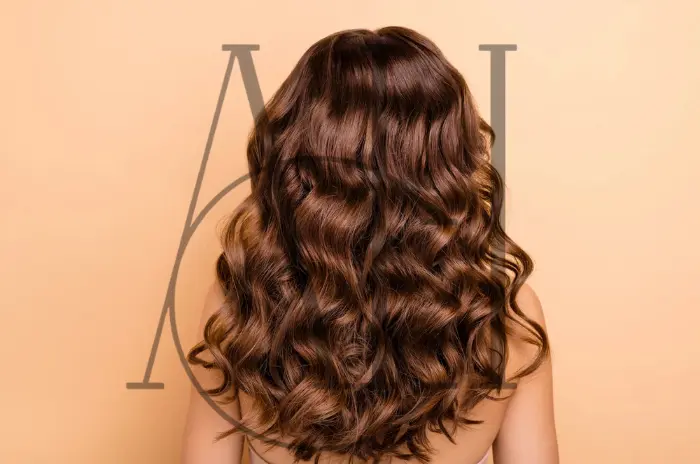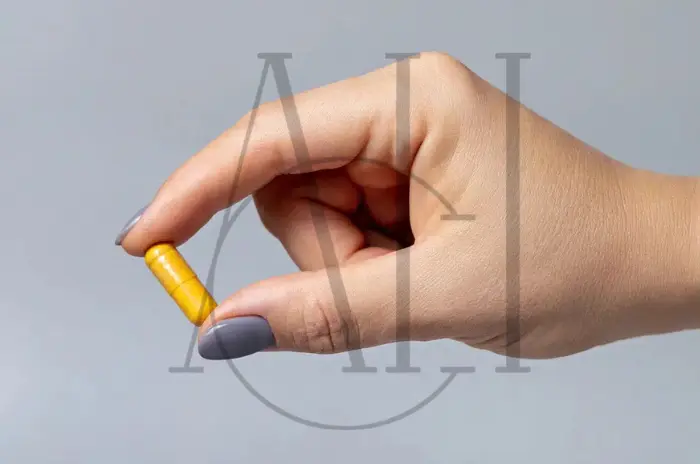Hair loss affects millions of people worldwide, and understanding the health of your hair follicles is crucial for maintaining a healthy scalp and preventing permanent damage. When dead hair follicles occur, they can lead to irreversible hair loss that significantly impacts your appearance and confidence. This comprehensive guide explores everything you need to know about dead hair follicles, their causes, symptoms, and the most effective treatments available today.
Dead hair follicles represent the final stage of follicle damage, where the tiny structures responsible for hair growth can no longer produce new strands. Unlike temporary hair loss conditions, dead follicles cannot naturally regenerate, making early detection and prevention essential. Understanding the difference between dormant and dead follicles can help you make informed decisions about hair restoration treatments and determine whether options like minoxidil for dead hair follicles or hair transplant procedures might be necessary.
Table of Contents
ToggleWhat Is a Damaged Hair Follicle?
A damaged hair follicle is a hair-producing structure that has experienced trauma, inflammation, or deterioration that impairs its normal function. Hair follicle damage causes can range from genetic predisposition to environmental factors, and the severity determines whether the damage is reversible or permanent. When follicles become damaged, they may produce thinner, weaker hair strands or enter a prolonged dormant phase before potentially dying completely.
Follicle inflammation is often the first sign of damage, appearing as redness, irritation, or tenderness around individual hair follicles. This inflammation can result from various factors including harsh chemical treatments, tight hairstyles, bacterial infections, or autoimmune conditions. Early intervention during the damage phase is crucial, as it may prevent progression to complete follicle death.
How Follicle Damage Leads to Hair Loss
The progression from healthy to damaged follicles follows a predictable pattern that begins with reduced hair production quality. Initially, damaged follicles may produce hair that appears thinner, shorter, or more brittle than normal. The hair growth cycle becomes disrupted, with shortened anagen (growth) phases and prolonged telogen (resting) phases, resulting in hair thinning and reduced overall density.
As damage accumulates, follicles undergo a process called miniaturization, where they gradually shrink in size. This miniaturization is particularly common in androgenetic alopecia, where DHT sensitivity causes follicles to become progressively smaller with each growth cycle. The miniaturized follicles produce increasingly fine, colorless hair that eventually becomes so weak it cannot emerge from the scalp surface.
When Damage Becomes Permanent
Permanent follicle damage occurs when the stem cells within the follicle bulge are destroyed or when scalp trauma creates irreversible scarring. Unlike temporary damage that affects only the actively growing portions of the follicle, permanent damage destroys the regenerative capacity entirely. Severe burns, deep cuts, certain autoimmune conditions, and prolonged inflammation can all lead to this irreversible state.
The transition from damaged to dead follicles often happens gradually, making it difficult to identify the exact point of no return. However, once follicles have been completely destroyed, they cannot be restored through topical treatments or lifestyle changes, leaving hair transplant for hair loss as the primary solution for restoring hair growth in affected areas.
What Are Dead Hair Follicles?
Dead hair follicles are hair-producing structures that have lost their ability to generate new hair strands permanently. Unlike dormant follicles, which can potentially be reactivated, dead follicles have suffered irreversible damage to their stem cell populations and structural integrity. This permanent state occurs when the follicle’s regenerative mechanisms are completely destroyed, often through prolonged inflammation, severe trauma, or genetic programming.
The process of follicle death typically involves the destruction of the dermal papilla, the structure at the base of the follicle that provides essential nutrients and growth signals. When this critical component is damaged beyond repair, the follicle loses its ability to initiate new growth cycles, resulting in permanent hair loss in that specific location.
How Hair Follicles Function in Healthy Growth
Healthy hair follicles operate through a complex cycle consisting of three distinct phases: anagen (growth), catagen (transition), and telogen (rest). During the anagen phase, which lasts 2-7 years, follicles actively produce hair strands through rapid cell division in the matrix region. The dermal papilla supplies essential nutrients and growth factors that maintain this productive activity.
The catagen phase represents a brief transitional period lasting 2-3 weeks, during which follicle activity slows and the hair shaft detaches from its blood supply. Finally, the telogen phase involves 2-3 months of rest, after which the old hair is shed and a new growth cycle begins. This continuous cycle allows healthy follicles to produce 25-30 hair strands throughout a person’s lifetime.
The Difference Between Dormant and Dead Hair Follicles
Understanding dormant vs dead follicles is crucial for determining appropriate treatment strategies. Dormant follicles have temporarily ceased hair production but retain their structural integrity and regenerative potential. These follicles may appear inactive due to hormonal changes, nutritional deficiencies, stress, or other reversible factors, but they can potentially resume normal function with proper intervention.
Dead hair follicles, conversely, have suffered permanent structural damage that eliminates their regenerative capacity. The stem cells responsible for initiating new growth cycles have been destroyed, and the supporting structures necessary for hair production are no longer functional. While dormant follicles may respond to treatments like minoxidil for follicle damage or PRP therapy for hair follicles, dead follicles cannot be revived through any currently available medical intervention.
What Do Dead Hair Follicles Look Like?
Identifying dead hair follicles requires understanding the visual and tactile changes that occur when follicles cease functioning. The most obvious sign is the complete absence of hair growth in previously hair-bearing areas, often accompanied by smooth, shiny skin that lacks the typical texture associated with active follicles. The scalp surface may appear slightly depressed where follicles once existed, and the normal pattern of follicular openings becomes absent.
Signs of dead hair follicles also include changes in skin color and texture around affected areas. The scalp may appear slightly translucent or have a different pigmentation compared to areas with healthy follicles. Additionally, the absence of sebaceous gland activity, which normally accompanies healthy follicles, can result in drier skin conditions in affected regions.
The White Bulb: A Sign of a Dead Hair Follicle?
The white bulb in hair follicle that sometimes appears on shed hairs is often misunderstood as a sign of follicle death. In reality, this white bulb represents the club hair formation that occurs naturally during the telogen phase of the hair cycle. When hairs are shed normally, they often retain this whitish, bulbous structure at the root end, which is completely normal and does not indicate follicle damage or death.
However, examining shed hairs can provide valuable information about follicle health. Hairs that break off without any root structure, appear extremely thin throughout their length, or show signs of severe weathering may indicate follicle distress. The presence of a healthy white bulb actually suggests that the follicle completed its growth cycle normally and is likely to produce another hair in the future.
Miniaturization: How Thinning Hair Reveals Follicle Health
Hair follicle symptoms of impending death often include progressive miniaturization, where follicles produce increasingly fine and short hairs with each growth cycle. This process is easily observable in conditions like male and female pattern baldness, where affected hairs become progressively thinner, shorter, and less pigmented over time. Eventually, miniaturized follicles may produce hairs so fine they appear as colorless “peach fuzz.”
The miniaturization process provides a window of opportunity for intervention before follicles die completely. Early-stage miniaturization may respond to treatments like minoxidil or PRP therapy hair follicles, while advanced miniaturization often indicates that follicles are approaching permanent dysfunction. Monitoring hair diameter and length changes can help determine the appropriate timing for various treatment interventions.
Signs and Symptoms of Dead Hair Follicles
Recognizing symptoms of damaged hair follicles early can prevent progression to permanent follicle death and preserve remaining hair. The most obvious symptom is progressive hair loss that begins with increased shedding and evolves into noticeable thinning or bald patches. However, subtle changes often precede obvious hair loss, including changes in hair texture, reduced growth rate, and alterations in the natural hair growth pattern.
Hair follicle symptoms may also include scalp sensitivity, itching, or discomfort in areas where follicles are under stress. Some individuals experience tingling sensations or mild pain in regions where follicles are actively deteriorating. These sensations often correlate with inflammatory processes that can either resolve with appropriate treatment or progress to permanent follicle damage.
Early Warning Signs of Follicle Damage
The earliest indicators of potential follicle damage include subtle changes in hair quality and growth patterns that may be overlooked initially. Hair may become increasingly difficult to style, appear less lustrous, or feel different in texture. The natural growth rate may slow, resulting in hair that seems to reach a maximum length earlier than previously experienced.
Treat damaged follicles early by paying attention to increased hair shedding during washing or brushing, particularly if the shed hairs appear thinner than normal or lack the typical root structure. Changes in scalp condition, such as increased oiliness, dryness, or sensitivity, may also indicate developing follicle problems that require attention before permanent damage occurs.
How to Check If Your Hair Follicles Are Dead
Self-assessment for dead hair follicles involves systematic observation of hair growth patterns and scalp condition over several months. Document areas of concern with photographs taken under consistent lighting conditions, noting any regions where hair growth appears to have ceased completely. Pay particular attention to areas that remain smooth and hairless for extended periods, as this may indicate follicle death.
The “tug test” can provide additional information about follicle health, though it should be performed gently to avoid causing additional damage. Gently grasping a small section of hair and applying minimal pressure should not result in excessive hair loss in healthy individuals. However, this test has limitations and cannot definitively determine follicle viability without professional assessment.
Diagnosis by a Hair Specialist
Professional evaluation by a dermatologist or trichologist provides the most accurate assessment of follicle health and viability. Specialists use advanced diagnostic tools including dermoscopy, trichoscopy, and sometimes follicle biopsy to determine the extent of damage and likelihood of recovery. These examinations can differentiate between dormant and dead follicles, identify underlying causes of hair loss, and recommend appropriate treatment strategies.
During professional evaluation, specialists assess scalp health, hair density, follicle diameter, and signs of inflammation or scarring. They may also perform pull tests, hair counts, and photographic documentation to establish baseline measurements for monitoring treatment progress. This comprehensive assessment is essential for developing effective treatment plans and setting realistic expectations for hair restoration outcomes.
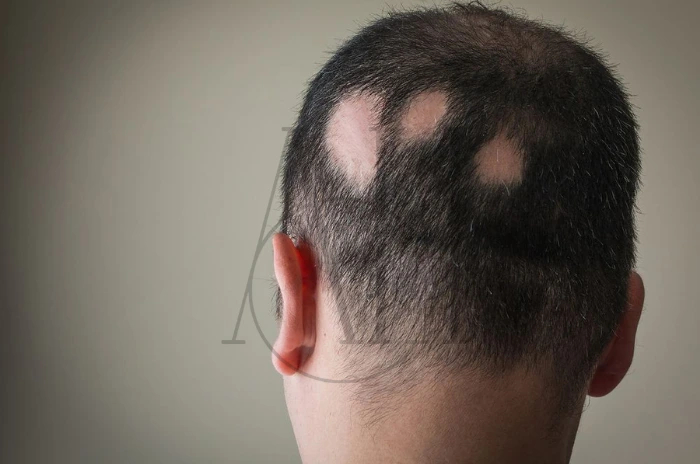
What Causes Hair Follicles to Die?
Understanding causes of dead hair follicles is essential for prevention and early intervention strategies. The most common cause is androgenetic alopecia, a genetic condition affecting both men and women that causes progressive follicle miniaturization and eventual death. This condition is driven by sensitivity to dihydrotestosterone (DHT), a hormone that binds to follicle receptors and gradually disrupts normal growth cycles.
Environmental and lifestyle factors also contribute significantly to follicle death. Chronic inflammation from various sources, including autoimmune conditions, infections, or physical trauma, can overwhelm the follicle’s repair mechanisms and lead to permanent damage. Additionally, prolonged exposure to harsh chemicals, extreme heat, or mechanical stress can accumulate over time to cause irreversible follicle destruction.
Genetic Factors and Pattern Baldness
Genetic predisposition represents the most significant risk factor for follicle death, particularly in cases of male and female pattern baldness. These inherited conditions involve increased sensitivity to DHT, which causes follicles to progressively shrink with each growth cycle until they can no longer produce viable hair strands. The genetic programming determines both the timing and pattern of hair loss, explaining why some individuals experience early-onset baldness while others maintain their hair well into advanced age.
The inheritance pattern for androgenetic alopecia is complex, involving multiple genes from both parents. While the presence of balding relatives increases risk, the exact timing and severity of hair loss cannot be predicted with certainty. Understanding family history helps individuals make informed decisions about preventive treatments and realistic expectations for hair retention throughout their lifetime.
Hormonal Imbalances and DHT Effects
Dihydrotestosterone (DHT) plays a central role in androgenetic alopecia by binding to androgen receptors in genetically susceptible follicles. This binding triggers a cascade of cellular changes that gradually reduce follicle size, shorten growth phases, and eventually lead to complete follicle death. The process is progressive and irreversible once follicles lose their regenerative capacity.
Other hormonal imbalances, including thyroid disorders, PCOS, and menopause-related changes, can also contribute to follicle damage and death. These conditions may alter the normal balance of growth-promoting and growth-inhibiting factors, creating an environment where follicles struggle to maintain normal function and may eventually succumb to permanent damage.
Scalp Trauma, Burns, and Scarring
Physical trauma to the scalp can cause immediate follicle death through direct destruction of follicle structures. Severe burns, deep cuts, surgical procedures, or crushing injuries may eliminate follicles entirely, leaving behind scar tissue that cannot support hair growth. This type of follicle loss is typically permanent and may require hair transplant procedures to restore appearance.
Less severe but repeated trauma, such as tight hairstyles, aggressive brushing, or chemical treatments, can gradually weaken follicles and contribute to their eventual death. This cumulative damage often goes unnoticed until significant hair loss has occurred, emphasizing the importance of gentle hair care practices throughout life.
Styling Damage from Heat or Chemicals
Excessive use of heat styling tools, harsh chemical treatments, and aggressive hair manipulation can gradually damage follicles beyond their ability to recover. High temperatures from blow dryers, flat irons, and curling tools can denature proteins within the follicle structure, while chemical relaxers, perms, and bleaching agents can cause chemical burns that destroy follicle tissue.
The cumulative effect of repeated styling damage may not become apparent for years, as follicles gradually lose their regenerative capacity. By the time obvious hair loss occurs, many follicles may have already progressed beyond the point of recovery, making prevention through gentle styling practices crucial for long-term hair health.
Can Dead Hair Follicles Be Revived?
The question of whether dead hair follicles can be revived is complex and depends on the extent of damage and the specific mechanisms involved in follicle death. True follicle death, where stem cells and supporting structures are completely destroyed, cannot be reversed with current medical technology. However, many follicles that appear dead may actually be severely damaged but still retain some regenerative potential.
Recent advances in regenerative medicine, including stem cell therapy and tissue engineering, offer hope for future treatments that might restore dead follicles. However, these approaches remain largely experimental and are not yet available for routine clinical use. Current treatment options focus on preserving remaining healthy follicles and maximizing the function of damaged but still viable follicles.
Medical Treatments to Stimulate Follicles
Minoxidil for dead hair follicles represents one of the most widely used treatments for hair loss, though its effectiveness is limited to follicles that retain some regenerative capacity. This medication works by increasing blood flow to follicles and extending the growth phase of the hair cycle. While minoxidil cannot truly revive dead follicles, it may help rejuvenate dormant or severely damaged follicles that still possess stem cell populations.
PRP therapy for hair follicles involves injecting concentrated platelets from the patient’s own blood into the scalp to deliver growth factors directly to follicles. This treatment may help stimulate dormant follicles and improve the function of damaged follicles, though it cannot restore completely dead follicles. The growth factors in PRP may help reduce inflammation and promote healing in follicles that have suffered damage but retain regenerative potential.
The Truth About Natural Remedies
While numerous natural remedies claim to revive dead hair follicles, scientific evidence supporting their effectiveness is limited. Oils to revive hair follicles, such as rosemary, peppermint, and castor oil, may provide some benefits for scalp health and circulation, but they cannot restore truly dead follicles. These natural treatments may help optimize the environment for healthy follicles and potentially support the function of damaged but viable follicles.
Scalp massage for hair growth can improve circulation and may help reduce stress-related factors that contribute to hair loss. However, massage alone cannot revive dead follicles or reverse genetic programming for androgenetic alopecia. Natural remedies are best viewed as supportive measures that may help maintain overall scalp health rather than treatments capable of restoring dead follicles.
Best Treatments for Dead Hair Follicles
When dealing with confirmed dead hair follicles, treatment options focus on maximizing the health and function of remaining viable follicles while considering hair restoration procedures for areas of permanent loss. The most effective approach typically involves a combination of medical treatments to preserve existing hair and surgical interventions to restore hair to areas where follicles have been lost permanently.
Hair regrowth treatments work best when initiated early, before follicles progress to complete death. However, even in cases where some follicles have died, protecting remaining healthy follicles is crucial for maintaining overall hair density and preventing further loss.
| Treatment Option | Effectiveness for Dead Follicles | Effectiveness for Damaged Follicles | Time to See Results | Side Effects |
|---|---|---|---|---|
| Minoxidil | Not effective | Moderate to High | 3-6 months | Scalp irritation, unwanted hair growth |
| PRP Therapy | Not effective | Moderate | 3-6 months | Mild pain, temporary swelling |
| Hair Transplant | Highly effective | Not applicable | 6-12 months | Scarring, temporary shock loss |
| Natural Oils | Not effective | Low to Moderate | 6-12 months | Rare allergic reactions |
| Scalp Massage | Not effective | Low | 6-12 months | None |
| Laser Therapy | Not effective | Moderate | 3-6 months | Mild scalp irritation |
Minoxidil and Its Effectiveness
Minoxidil for dead hair follicles has limited effectiveness for truly dead follicles but may provide benefits for severely damaged or dormant follicles. This FDA-approved medication works by increasing blood flow to the scalp and extending the anagen phase of the hair growth cycle. Studies show that minoxidil can slow hair loss progression and may stimulate some regrowth in follicles that retain regenerative capacity.
The effectiveness of minoxidil varies significantly among individuals, with better results typically seen in younger patients with recent onset hair loss. For dead hair follicles, minoxidil cannot restore function, but it may help optimize the environment for any remaining viable follicles in the treated area. Consistent use is required to maintain any benefits achieved.
PRP Therapy for Follicle Regeneration
PRP therapy hair follicles treatment involves extracting platelets from the patient’s blood and injecting the concentrated preparation into areas of hair loss. The growth factors and cytokines in PRP may help stimulate cellular regeneration and reduce inflammation around damaged follicles. While PRP cannot revive completely dead follicles, it may help restore function to severely damaged follicles that still contain viable stem cells.
Clinical studies on PRP therapy show variable results, with some patients experiencing significant improvement in hair density and thickness while others see minimal benefits. The treatment is most effective when combined with other hair loss treatments and is typically recommended for patients with early to moderate hair loss rather than advanced baldness where most follicles have died.
Hair Transplant Options for Permanent Loss
Hair transplant for hair loss remains the most effective treatment for areas where follicles have died permanently. Modern hair transplant techniques, including FUE (Follicular Unit Extraction) and FUT (Follicular Unit Transplantation), can redistribute healthy follicles from donor areas to regions of permanent hair loss. These procedures provide permanent results because transplanted follicles retain their genetic resistance to DHT and other damaging factors.
Hair transplant dead follicles areas can be successfully treated through careful planning and execution of transplant procedures. The success rate for hair transplants is high, with 90-95% of transplanted follicles typically surviving and producing new hair growth. However, candidates must have adequate donor hair available and realistic expectations about the final results.
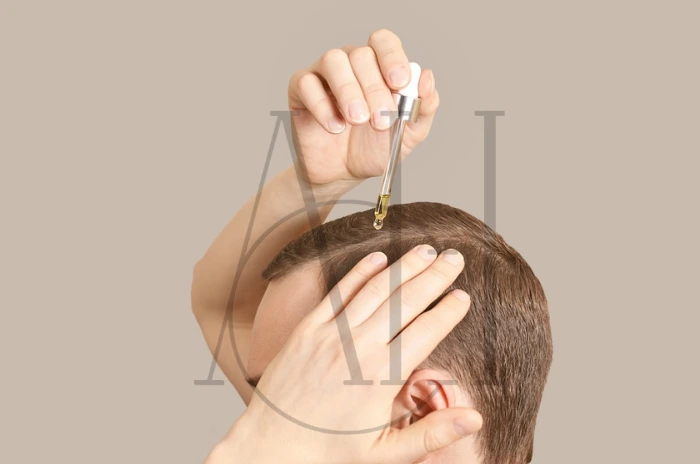
How to Prevent Hair Follicle Damage
Prevention of hair follicle damage causes requires a comprehensive approach addressing genetic, environmental, and lifestyle factors. Early intervention is crucial, as preventing damage is far more effective than attempting to reverse it after it has occurred. A proactive approach to scalp health maintenance can significantly reduce the risk of follicle damage and extend the productive lifespan of hair follicles.
Understanding individual risk factors, including family history and personal habits, helps guide preventive strategies. Regular monitoring of hair and scalp condition allows for early detection of problems and prompt intervention before permanent damage occurs.
Proper Scalp Care and Nutrition
Maintaining optimal scalp health requires gentle cleansing, appropriate moisturization, and protection from environmental damage. Use mild, sulfate-free shampoos that clean without stripping natural oils, and avoid overwashing, which can irritate the scalp and disrupt the natural barrier function. Regular scalp massage can improve circulation and help distribute natural oils throughout the hair.
Nutritional support for follicle health includes adequate protein intake, essential fatty acids, and key vitamins and minerals such as biotin, zinc, iron, and vitamins D and B12. A balanced diet rich in antioxidants helps protect follicles from oxidative stress, while staying well-hydrated supports overall cellular function and nutrient delivery to follicles.
Avoiding Damaging Hairstyles and Chemicals
Preventing mechanical damage to follicles requires avoiding tight hairstyles that create tension on the hair shaft and follicle structure. Styles such as tight ponytails, braids, and extensions can cause traction alopecia, leading to progressive follicle damage and eventual death. When styling is necessary, alternate between different styles and avoid excessive tension.
Chemical treatments, including perms, relaxers, and bleaching, should be used sparingly and only by trained professionals. Allow adequate time between chemical treatments for follicles to recover, and always follow manufacturer instructions for application and processing times. Heat styling should be minimized, and heat protectant products should be used when thermal styling is necessary.
When to Consider a Hair Transplant
Hair transplant for hair loss becomes the optimal treatment choice when other interventions have failed to produce satisfactory results or when the extent of follicle death makes non-surgical treatments ineffective. Candidates for hair transplant procedures typically have areas of permanent hair loss where follicles have died completely, adequate donor hair availability, and realistic expectations about the procedure outcomes.
The decision to pursue hair transplant surgery should be made after thorough evaluation by a qualified hair restoration specialist who can assess follicle viability, donor hair quality, and overall suitability for the procedure. Factors such as age, hair loss pattern, and future progression risk all influence the timing and approach for hair transplant procedures.
FUT vs. FUE for Dead Follicles
Follicular Unit Transplantation (FUT) and Follicular Unit Extraction (FUE) represent the two primary surgical approaches for treating areas with dead hair follicles. FUT involves removing a strip of scalp from the donor area and dissecting it into individual follicular units for transplantation, while FUE extracts individual follicles directly from the donor area using specialized punches.
FUE offers advantages including minimal scarring, faster recovery, and the ability to harvest follicles from various donor sites. However, FUT may be more suitable for patients requiring large numbers of grafts or those with limited donor hair density. The choice between techniques depends on individual factors including hair characteristics, donor availability, and patient preferences.
Success Rates and Recovery Process
Modern hair transplant procedures achieve success rates of 90-95% for graft survival, with most patients experiencing natural-looking results within 12-18 months post-procedure. The recovery process typically involves initial healing within 7-10 days, followed by a temporary shedding phase before new growth begins around 3-4 months post-transplant.
Factors influencing success rates include surgeon experience, patient health, post-operative care compliance, and realistic expectations. Patients must understand that hair transplant results are permanent but do not prevent further hair loss in non-transplanted areas, which may require ongoing medical management.
Hair Transplant Cost
Hair transplant cost varies significantly based on factors including geographic location, surgeon experience, technique used, and number of grafts required. In the United States, costs typically range from $4,000 to $15,000 or more for comprehensive procedures. International options may offer lower costs but require careful consideration of quality and safety standards.
When evaluating costs, patients should consider the long-term value of permanent hair restoration compared to ongoing expenses for temporary treatments. Many practices offer financing options to make procedures more accessible, and some insurance plans may provide partial coverage for hair loss related to medical conditions.
Can You Revive Dead Hair Follicles?
The possibility of reviving dead hair follicles depends heavily on the extent of damage and the specific mechanisms that led to follicle death. True follicle death, characterized by complete destruction of stem cells and supporting structures, cannot be reversed with current technology. However, many follicles that appear non-functional may actually be dormant or severely damaged but still retain some regenerative potential.
Distinguishing between truly dead follicles and those that are severely compromised requires professional evaluation and sometimes extended observation periods. Some follicles may remain dormant for years before showing signs of renewed activity, while others may be permanently lost despite appearing structurally intact.
When Revival Is Possible
Follicle revival is most likely when damage has not completely destroyed the stem cell populations within the follicle bulge region. Conditions such as telogen effluvium, alopecia areata, or temporary inflammatory conditions may cause follicles to cease function temporarily without causing permanent death. In these cases, addressing underlying causes may allow follicles to resume normal activity.
How to revive hair follicles in cases where revival is possible involves optimizing scalp health, reducing inflammation, improving circulation, and providing necessary nutrients for cellular regeneration. Treatments such as minoxidil, PRP therapy, and lifestyle modifications may help stimulate dormant follicles back to activity.
How Much Damage Is Too Much?
The threshold between reversible damage and permanent follicle death is not always clear-cut and varies among individuals. Factors that suggest irreversible damage include complete absence of follicle structures on examination, extensive scarring in the affected area, and lack of response to multiple treatment interventions over extended periods.
Professional assessment using advanced diagnostic tools can help determine the likelihood of follicle recovery and guide treatment decisions. In cases where revival is unlikely, focusing efforts on preserving remaining healthy follicles and considering hair restoration procedures for permanently damaged areas may be more practical approaches.
How to Revive Dead Hair Follicles
While truly dead hair follicles cannot be revived, several approaches may help stimulate dormant or severely damaged follicles that retain regenerative potential. These methods focus on optimizing the scalp environment, improving circulation, reducing inflammation, and providing essential nutrients for cellular regeneration and repair.
A comprehensive approach combining multiple strategies often produces better results than relying on single interventions. Consistency and patience are essential, as follicle regeneration is a slow process that may require months to show visible improvements.
Scalp Massage to Stimulate Blood Flow
Scalp massage for hair growth represents one of the most accessible methods for potentially stimulating follicle activity. Regular massage increases blood circulation to the scalp, delivering essential nutrients and oxygen while removing metabolic waste products. The mechanical stimulation may also help reduce stress-related factors that contribute to hair loss.
Effective scalp massage involves gentle circular motions using fingertips rather than nails, focusing on areas of concern while covering the entire scalp. Sessions should last 5-10 minutes and can be performed daily without adverse effects. Some studies suggest that consistent scalp massage may help improve hair thickness and growth rate over time.
Oils That Nourish Hair Follicles
Oils to revive hair follicles have been used traditionally for hair care and may provide some benefits for scalp health and follicle function. Rosemary oil has shown promise in studies comparing its effectiveness to minoxidil for androgenetic alopecia. Peppermint oil may help improve circulation, while castor oil is believed to provide moisturizing and anti-inflammatory benefits.
When using oils for follicle health, proper application and removal are important to prevent pore clogging and buildup. Oils should be massaged gently into the scalp, left on for 30 minutes to several hours, then washed out thoroughly with mild shampoo. Regular use may help optimize scalp conditions for follicle health.
Gentle Exfoliation for Scalp Health
Exfoliation scalp treatment helps remove dead skin cells, product buildup, and sebum that may clog follicles and impede healthy hair growth. Gentle exfoliation can improve circulation, allow better penetration of topical treatments, and create optimal conditions for follicle function. However, excessive or aggressive exfoliation can cause irritation and damage.
Safe exfoliation methods include using soft bristle brushes, gentle scrubs with fine particles, or chemical exfoliants containing salicylic acid or glycolic acid. Frequency should be limited to 1-2 times per week to avoid over-stimulation, and products should be chosen based on individual scalp sensitivity and condition.
Diet Tips with Biotin, Zinc, Omega-3s
Nutritional support plays a crucial role in maintaining follicle health and supporting any potential regenerative processes. Biotin deficiency, while rare, can contribute to hair loss and brittle hair when it occurs. Adequate biotin intake through diet or supplementation may help support healthy hair growth in individuals with deficiencies.
Zinc is essential for protein synthesis and cellular repair processes within follicles. Foods rich in zinc include oysters, beef, pumpkin seeds, and lentils. Omega-3 fatty acids from fish, flaxseeds, and walnuts help reduce inflammation and support overall cellular health. A balanced diet including these nutrients provides the foundation for optimal follicle function.
How to Avoid Follicle Damage
Preventing hair follicle damage causes requires understanding and avoiding factors that contribute to follicle deterioration and death. A proactive approach focusing on gentle hair care practices, environmental protection, and overall health maintenance can significantly reduce the risk of permanent follicle damage.
Early intervention and consistent preventive practices are far more effective than attempting to reverse damage after it has occurred. Building good habits and avoiding damaging practices from an early age provides the best protection for long-term hair health.
Avoiding Silicone and Product Buildup
Silicone buildup hair problems occur when heavy styling products accumulate on the scalp and hair shaft, potentially clogging follicles and impeding healthy growth. While silicones can provide temporary benefits for hair appearance, heavy buildup may interfere with scalp health and natural oil distribution. Regular clarifying treatments help remove accumulated products without over-stripping natural oils.
Choosing hair care products carefully and reading ingredient labels helps avoid excessive silicone exposure. Water-soluble silicones break down more easily and are less likely to cause buildup problems. When using products containing heavy silicones, ensure thorough cleansing with clarifying shampoos on a regular basis.
Limiting Heat and Tight Hairstyles
Thermal damage from heat styling tools can gradually weaken follicle structures and contribute to eventual follicle death. High temperatures denature proteins within the hair shaft and may affect the follicle itself with repeated exposure. Limiting heat styling frequency, using lower temperature settings, and always applying heat protectant products helps minimize thermal damage.
Tight hairstyles create mechanical stress on follicles that can lead to traction alopecia and permanent follicle damage. Styles such as tight ponytails, braids, buns, and extensions should be worn intermittently rather than continuously. Alternating between loose and secured styles allows follicles to recover from mechanical stress.
Scalp Protection from Sun and Pollutants
Environmental protection for the scalp includes shielding from UV radiation, which can damage follicle structures and contribute to oxidative stress. Wearing hats or using UV-protective hair products when spending extended time outdoors helps prevent sun damage to both hair and scalp tissue.
Air pollution, chemicals, and other environmental toxins can accumulate on the scalp and potentially interfere with follicle health. Regular gentle cleansing removes environmental contaminants while maintaining the scalp’s natural protective barrier. In heavily polluted environments, more frequent washing may be beneficial, balanced with adequate moisturizing to prevent dryness.
FAQ : Dead Hair Follicles Causes Symptoms and Effective Treatments
Can a damaged hair follicle cause permanent hair loss?
Yes, severely damaged hair follicles can progress to permanent death, resulting in irreversible hair loss in affected areas.
What's the difference between dormant and dead hair follicles?
Dormant follicles have temporarily stopped producing hair but retain regenerative potential, while dead follicles have suffered permanent structural damage and cannot be revived.
Is the white bulb on shed hair a sign of a dead follicle?
No, the white bulb on shed hair is actually a normal club hair formation that occurs during the natural hair growth cycle and indicates healthy follicle function.
What early signs suggest hair follicles might be dying?
Early signs include progressive hair thinning, changes in hair texture, increased shedding, scalp sensitivity, and miniaturization of hair strands.
How does DHT contribute to follicle miniaturization and death?
DHT binds to receptors in genetically susceptible follicles, causing them to progressively shrink with each growth cycle until they eventually lose the ability to produce viable hair.
Can natural remedies revive damaged hair follicles?
Natural remedies may help support scalp health and optimize conditions for follicle function, but they cannot revive truly dead follicles or reverse genetic programming for hair loss.
How effective are minoxidil and PRP therapy?
Both treatments can help slow hair loss and may stimulate regrowth in damaged but viable follicles, though they cannot restore completely dead follicles or guarantee results for all patients.
When should I consider a hair transplant versus continued treatments?
Hair transplant should be considered when non-surgical treatments have failed, follicles are confirmed dead, adequate donor hair is available, and realistic expectations exist for the procedure outcomes.

